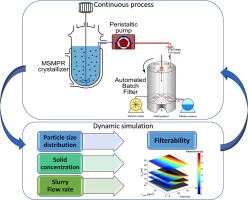How to Market NFTs in 2025: A Complete Guide

NFTs have transformed from speculative digital assets into dynamic tools with real utility across art, gaming, fashion, and the metaverse. But as the market matures in 2025, so does the competition. Today, simply creating an NFT project isn’t enough you need a strategic, multi-channel marketing plan to stand out, build a loyal community, and drive long-term engagement. In this complete guide, we’ll walk you through the best NFT marketing strategies in 2025 from pre-launch hype to post-mint retention covering everything from influencer campaigns and community building to SEO, paid media, partnerships, and analytics.
Understanding the 2025 NFT Landscape
Before jumping into strategy, it’s crucial to understand how the NFT space has evolved by 2025:
-
Utility NFTs dominate – NFTs aren’t just collectibles; they’re access keys, game assets, loyalty rewards, and digital IDs.
-
Community-first approach – Projects are judged by the strength of their communities, not just floor prices.
-
Cross-chain integration – Ethereum is no longer the only game in town; Solana, Polygon, and Base are thriving ecosystems.
-
Stricter regulations – Marketing practices must now follow regional advertising standards and transparency guidelines.
-
Smarter buyers – The average NFT buyer today is savvy, research-driven, and skeptical of hype.
These shifts demand more authentic, data-driven marketing strategies that emphasize value, trust, and community engagement.
Crafting a Solid NFT Marketing Strategy
1. Define Your Brand and Story
Your project isn’t just about digital assets it’s about narrative. What’s your vision? What problem are you solving? What makes your NFTs valuable beyond resale?
A strong story resonates deeply with communities and drives organic word-of-mouth.
Pro tips:
-
Build a brand persona and tone
-
Align visual identity across platforms
-
Create a manifesto or lore for added depth
2. Understand Your Audience
Segment your potential buyers:
-
Art collectors
-
Gamers
-
DeFi-native users
-
Web3 investors
-
Cultural enthusiasts
Use insights tools (like Nansen, Dune Analytics, and social listening platforms) to understand where they hang out and what content they engage with.
Pre-Launch NFT Marketing Tactics
1. Tease with Content Marketing
Start building anticipation 30–60 days before launch:
-
Share behind-the-scenes content
-
Post sneak peeks of artwork or features
-
Use storytelling in blogs, threads, or newsletters
Platforms to use: Twitter/X, Mirror, Substack, Medium, Instagram, YouTube Shorts
2. Grow Your Community
Use Discord and Telegram to nurture early supporters. Run:
-
Contests (art, memes, referrals)
-
Whitelist campaigns
-
Sneak peeks and dev updates
-
Real-time community polls
Create a moderator team to keep the space safe and interactive.
3. Build a Strategic KOL and Influencer Network
Collaborate with:
-
Twitter KOLs in the NFT niche
-
YouTube reviewers for walk-throughs
-
Podcast hosts for deeper interviews
-
NFT newsletter writers (like NFTNow, Bankless, Decrypt)
Choose creators based on engagement and trust, not just follower count.
4. Airdrops and Giveaways
These drive virality and increase your email/social list. Use them to:
-
Reward early backers
-
Incentivize sharing
-
Build hype through scarcity
Use Gleam or Zealy to automate airdrop mechanics while tracking conversions.
Launch Day Strategy
Your launch day must be coordinated across all fronts. Here’s what to prioritize:
1. Live AMAs and Spaces
Host a live Q&A on Twitter Spaces, Discord Stage, or YouTube Live. Include your team, influencers, and collaborators. Address user questions transparently.
2. Cross-Platform Announcements
Post on:
-
Twitter
-
Discord
-
Reddit
-
LinkedIn (if B2B or utility-focused)
-
Partner communities (launchpads, DAOs, etc.)
Be sure to include: mint link, supply, utility, pricing, and time.
3. Email and Push Campaigns
Use your mailing list to notify users. Include:
-
One-click mint button
-
FAQs
-
Real-time mint status updates
If your project has a dApp or wallet, send push notifications.
4. Launchpad Partnerships
If you’re launching via a platform like Magic Eden, OpenSea Drops, or Binance NFT, make sure your campaign aligns with their promo schedule. These platforms often offer pre-built exposure, collector bases, and trust.
Post-Mint Growth and Long-Term Marketing
The real work begins after minting. Here’s how to keep your holders engaged and attract new users:
1. Ongoing Community Engagement
Continue to host weekly events:
-
AMAs
-
Art reveals
-
Feature drops
-
Game nights
-
Governance votes
Create a roadmap dashboard that updates the community in real time.
2. Content Series and Lore Expansion
If your NFTs are narrative-driven (games, avatars, IP), build ongoing stories and plotlines through blog posts, short videos, or comics.
This adds emotional investment and keeps your brand alive.
3. Utility Rollouts
Deliver real-world or digital utilities:
-
Access to staking, DAOs, events
-
Game integration
-
Exclusive merch
-
IRL experiences
Every utility release is a marketing opportunity. Leverage it with press releases, KOL campaigns, and community contests.
4. Holder Rewards and Loyalty Programs
Reward long-term holders with:
-
New airdrops
-
Burn-and-mint mechanics
-
IRL event invites
-
Exclusive roles and voting power
This builds retention and resale resistance.
Paid NFT Marketing in 2025
Paid media now requires more precision than ever. Focus on:
1. Sponsored Content and PR
Pitch stories to top crypto and NFT sites:
-
Cointelegraph
-
NFTNow
-
Decrypt
-
Coindesk
-
Yahoo Finance
Use sponsored press releases to reach investors, but ensure it aligns with organic KOL messaging.
2. Web3 Ad Networks
Use crypto-native platforms like:
-
Coinzilla
-
Adshares
-
Bitmedia
-
Brave Ads
These let you target wallet holders, DeFi users, and niche audiences via display or native ads.
3. Social Media Ads
While Meta and Google have loosened restrictions, focus on retargeting and value-driven ads (e.g., behind-the-scenes videos or benefits of ownership) instead of hype. Always comply with platform guidelines and disclaimers.
Collaborations and Partnerships
NFTs thrive in ecosystems, not silos. Look for:
-
Brand partnerships: Fashion, gaming, music, events
-
DAO alliances: Joint staking, whitelist sharing
-
Metaverse integrations: Let users bring your NFTs into Sandbox, Decentraland, or Spatial
-
Cross-project collabs: Allow holders of Project A to access Project B perks
These partnerships add credibility and cross-pollinate audiences.
Analytics and Optimization
Use tools to measure your ROI and audience behavior:
1. Community Analytics
-
Discord Insights
-
Collab.Land dashboard
-
Guild.xyz performance
2. Website and Wallet Analytics
-
Google Analytics
-
Dune Analytics
-
Footprint Analytics
Track wallet connections, click-throughs, mint funnel drops, and referral sources.
3. Social & PR Tracking
-
LunarCrush
-
Mention
-
Sprout Social
Optimize based on content that drives real engagement, not vanity metrics.
Regulatory and Ethical Considerations
In 2025, NFT marketing must follow emerging Web3 advertising standards:
-
Clear disclosures for sponsored content
-
No misleading pricing or guaranteed returns
-
Transparent tokenomics
-
Respect user privacy especially in wallet-based marketing
Ethical marketing will not only protect your brand but also build long-term community trust.
Conclusion: NFT Marketing in 2025 Is All About Value and Community
Marketing NFTs in 2025 is no longer about flash-in-the-pan virality. It’s about creating real value, telling authentic stories, and cultivating tight-knit communities that believe in your project beyond financial gain.
Whether you’re launching a generative art project, a blockchain game, or an enterprise NFT solution, your marketing plan should focus on trust, utility, and participation.
In the end, the projects that win are the ones that deliver more than just a token—they deliver experiences, impact, and belonging.







Leave a Comment